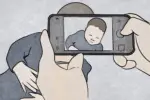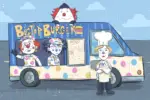Ask any student who spent a significant period of time in online learning during the pandemic about their experience and you will almost certainly hear groans. The limitations of Zoom classrooms resulted in widespread decreases in student engagement, diminished academic achievement and worsened mental health among students. Fortunately for educators and students alike, the 2021-22 academic year saw most students resume in-person learning. Now that virtual learning may not be required in the foreseeable future, many have closed the book on online education as a failed supplement needed to adapt to severely unusual circumstances. This unpopular form of teaching is, however, only a narrow slice of what online learning can be, and there is one facet of virtual education that does not deserve to be swept up in the wave of scorn.
YouTube plays host to a wide variety of channels and figures that produce educational content for free. Numerous individuals such as author John Green and multifaceted educator Michael Stevens have spent years building short-form educational brands on the website. World-class universities have also made certain course materials available on YouTube, such as MIT and its “OpenCourseWare” series. Individuals and institutions alike have contributed their fair share to the noble aim of educating the online masses, yet one entity has gone beyond teaching and completely transformed how people look at online learning. The TED Conferences organization has played host to some of the most transformative intellectual colloquia in recent history. Housed within a channel with over 21 million subscribers, TED Talks, as the individual presentations are commonly known, have grabbed online audiences with their incredible ability to platform speakers who have compelling stories that offer insight into various facets of the human condition.
TED is the brainchild of 20th-century architect Richard Wurman, who wanted to explore the interdisciplinary character of technological and ideological innovation. After struggling to find an audience during the 1980s, the forum found its footing during the following decade as it established itself as a renowned marketplace of ideas. The brand’s name is an acronym for technology, entertainment and design, though the scope of content covered by the TED Talk library is much broader than these three fields. The talks, which generally last between 10 and 15 minutes, give professionals from a wide variety of fields the opportunity to speak on life lessons or transformative discoveries that their unique experiences and circumstances have revealed.
TED Talks are not heavy-handed lessons in morality; they teach through storytelling and the incredible power of empathy. One of the more striking examples of this unique approach to learning comes from the talk delivered by Daryl Davis, an African American R&B pianist. In 1983, Davis had a strange entanglement with Roger Kelly, the Imperial Wizard of the Ku Klux Klan. In an effort to understand how an individual can commit their entire existence to bigotry and hatred, Davis met with Kelly despite the threat to his safety and conversed with him about the Klan’s ideology. An understandably tense yet amicable friendship blossomed from the unlikely meeting, with Davis eventually being invited to Klan events and meeting and befriending several other members. He was able to enter these spaces and converse with members of the Klan not because he agreed with their dehumanizing beliefs, but because of mutual curiosity between the parties about how the other saw the world. The bridge built between Davis and Kelly came from a willingness to hear the other’s life stories and consider what had led the other to their position.
The story is remarkable for the degree of tolerance it demonstrates from an institution founded upon hatred, yet Davis is quick to point out that his story should not be appreciated for its novelty alone. The pianist offers a simple yet powerful summary of the underlying dynamic of his relationship toward the end of his talk, saying: “Ignorance breeds fear; we fear those things we do not understand. If we do not keep that fear in check, that fear in turn will breed hatred.” The talk is not a complete success story, for the Klan and its members have not been reformed in the decades since Davis’ interactions with the Imperial Wizard. It also does not suggest that such change is easy, merely that bigotry can be challenged by meaningful discourse that highlights the common humanity between people. Davis’ talk is also a metacommentary on the entire format of TED, a conference that challenges the audience to reconsider its preconceived notions through the presentation of other people’s stories.
TED Talks are a testament to the versatility of storytelling as a medium, for no two talks are alike. One of the most infamous TED Talks was delivered by Kyle MacDonald, who details an incredible saga in which he embarked on an experiment in behavioral economics by trading a red paperclip for a series of increasingly more valuable objects, culminating in a house in Saskatchewan, Canada. His protracted saga brought him across the Americas as he met with eccentric individuals and made bizarre trades for objects such as a van, a Kiss-themed snow globe and a Budweiser sign. The incredible tale is made even more spectacular by the manner in which MacDonald tells it. Dressed in a generic button-down and slightly baggy pants, MacDonald presents himself as the archetypal average Joe. He does not claim to be a legitimate social scientist, nor does he speak with an academic vocabulary; rather, he constantly throws in quips and endears himself to the audience with a generous dose of dry humor. MacDonald speaks with a simple sincerity, and the eagerness of someone who wants his experiences to encourage others to pursue their passions, no matter how pedantic or ambitious. The somewhat humorous talk demonstrates the power of visual presentation and attitude in storytelling, and the essential nature of curiosity in a space of learning.
Numerous TED Talks deal with relatively straightforward stories and ideas, yet one of the great benefits of the conference’s format is its ability to delve into complex topics that do not lend themselves to a clear-cut moral or lesson. Brené Brown’s talk on uncertainty is a prime example of this strength. A social scientist at the University of Houston, Brown speaks about her journey through academia and her clinical approach to understanding human psychology. In an intellectual quest to understand the underpinning characteristics of emotional vulnerability, she spent years examining interviews and pieces of writing by study participants who expressed feeling vulnerable in their present circumstances. Seeking commonality in the language these excerpts employed, Brown discovered that most individuals displayed emotions such as compassion and courage, feelings that are not typically associated with vulnerability. Brown’s data yielded a conclusion that the study was not designed to produce, yet this disjunction ultimately informed a conclusion more significant than the specific ramifications of a singular emotional state.
The rigidity of Brown’s approach to studying emotions initially blinded her to the crucial realization that a scientific approach, one that seeks to minimize all uncertainties in a study, is inadequate. In her talk, Brown states: “My mission to control and predict turned up the answer that the way to live is with vulnerability, and to stop controlling and predicting.” Instead of perceiving vulnerability as an inherently negative state of being, Brown’s discovery of the positive sentiments embedded within vulnerability suggested that it could be a frame of mind that is embraced in everyday life. A willingness to be vulnerable requires personal strength and a high degree of self-awareness, positive attributes that can be attained by leaning into the discomfort of vulnerability. Brown’s talk is not only relevant to fellow social scientists, for her message is ultimately about deconstructing the instinct to code emotions, people and ideas as either wholly positive or negative. Her wisdom can be adapted to the conditions of each person in the audience, and her talk demonstrates a level of intellectual versatility that is rare in most classroom environments.
The sheer wealth of knowledge held within the library of TED Talks is staggeringly extensive, yet it is by and large an untapped well for many young students. The unfortunate reality of American secondary and college classrooms is their focus on teaching to the test. A student could watch the entire catalog of TED Talks on YouTube and would still be ill-prepared to take the SAT because traditional academic examinations prioritize memorization and logical reasoning as opposed to the attainment of wisdom. The narrow educational landscape does not devalue the intellectually rich nature of the talks as tools to teach people about the forces that shape everyday life. TED Talks embrace radical empathy as an unparalleled strategy for compelling a viewer to consider values or ideas beyond the bounds of their own lived experiences, and there is no textbook capable of replicating that.

















